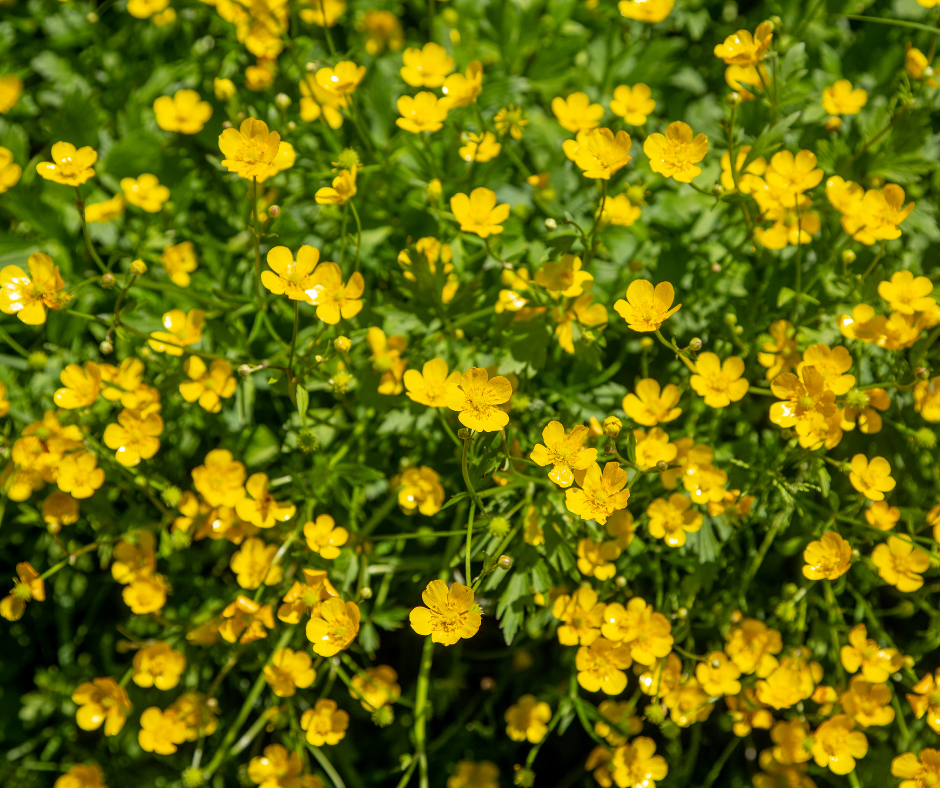Buttercup Control in Pastures
go.ncsu.edu/readext?857002
en Español / em Português
El inglés es el idioma de control de esta página. En la medida en que haya algún conflicto entre la traducción al inglés y la traducción, el inglés prevalece.
Al hacer clic en el enlace de traducción se activa un servicio de traducción gratuito para convertir la página al español. Al igual que con cualquier traducción por Internet, la conversión no es sensible al contexto y puede que no traduzca el texto en su significado original. NC State Extension no garantiza la exactitud del texto traducido. Por favor, tenga en cuenta que algunas aplicaciones y/o servicios pueden no funcionar como se espera cuando se traducen.
Português
Inglês é o idioma de controle desta página. Na medida que haja algum conflito entre o texto original em Inglês e a tradução, o Inglês prevalece.
Ao clicar no link de tradução, um serviço gratuito de tradução será ativado para converter a página para o Português. Como em qualquer tradução pela internet, a conversão não é sensivel ao contexto e pode não ocorrer a tradução para o significado orginal. O serviço de Extensão da Carolina do Norte (NC State Extension) não garante a exatidão do texto traduzido. Por favor, observe que algumas funções ou serviços podem não funcionar como esperado após a tradução.
English
English is the controlling language of this page. To the extent there is any conflict between the English text and the translation, English controls.
Clicking on the translation link activates a free translation service to convert the page to Spanish. As with any Internet translation, the conversion is not context-sensitive and may not translate the text to its original meaning. NC State Extension does not guarantee the accuracy of the translated text. Please note that some applications and/or services may not function as expected when translated.
Collapse ▲Last year many people were dismayed to find a sea of yellow flowers in their pasture when spring rolled around. While buttercups can be pretty to look at and a sure sign that spring has arrived, their toxicity to livestock and their invasive nature makes them a very unwanted sight in a pasture.
 Buttercup is a short-lived perennial weed that behaves more like a winter annual. It begins to germinate in the fall and grows into the spring when the weather warms up. It has characteristic shiny, bright yellow flowers with five petals. This weed thrives in pastures where there is little competition, such as overgrazed areas or bare patches. All parts of the plant are toxic to livestock and can cause blistering in the mouth and internal parts of the digestive tract, diarrhea, colic, and even death in extreme cases. However, buttercup is bitter and most animals will refuse to eat it as long as other forage options are available. The toxin that causes these issues will not be active when the buttercup is dried, so it is not a concern in hay.
Buttercup is a short-lived perennial weed that behaves more like a winter annual. It begins to germinate in the fall and grows into the spring when the weather warms up. It has characteristic shiny, bright yellow flowers with five petals. This weed thrives in pastures where there is little competition, such as overgrazed areas or bare patches. All parts of the plant are toxic to livestock and can cause blistering in the mouth and internal parts of the digestive tract, diarrhea, colic, and even death in extreme cases. However, buttercup is bitter and most animals will refuse to eat it as long as other forage options are available. The toxin that causes these issues will not be active when the buttercup is dried, so it is not a concern in hay.
Since buttercup starts growth in the fall, it is important to have a thick stand of grass that will prevent the new seedlings from taking root. Proper fertilization and grazing management in the fall will help encourage this thick stand. Avoid overgrazing throughout the winter to prevent creating an environment that is favorable to buttercup growth.
When buttercups are present, mowing in the spring can help reduce flowers and therefore seed development. But mowing alone will not eliminate the plant and the problems it poses.
Chemical control is a very effective strategy, but it is important to utilize this method early. Once it flowers, the plant is too mature for herbicides to have effective control. The ideal time to apply herbicides is late February through early March while the weeds are still small. 2,4-D is an effective herbicide that provides good control when applied early. Other effective herbicide options include aminopyralids (eg. GrazonNext), 2,4-D + dicamba (eg. WeedMaster), triclopyr (eg. Crossbow), or metsulfuron (eg. Cimmaron). Picking the right product can depend on other weeds you need to control at the same time.
If your pasture had issues with buttercup last year, you can count on them being back again this year. Start scouting early and be prepared to utilize control methods. If infestations have been heavy in the past, do not expect this problem to go away after one herbicide application. It can take several years of timely chemical control to get the buttercup under control. Always encourage a thick healthy stand of grass to help reduce weed pressure.




